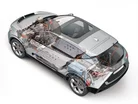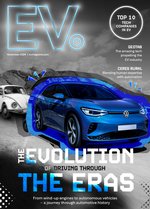What is regenerative braking and why is it more efficient?

Anyone who owns, or has driven, an electric vehicle (EV) may have noticed that, when braking, the mileage increases slightly—and we’re here to explain why.
The regenerative (regen) braking function was introduced to EVs to leverage kinetic energy from the electric motor when the car slows down. This is a feature that is leveraged both on the road and in racing—a critical characteristic that Formula E incorporated into its race format.
Benefits of regen include less maintenance—as wear and tear on brake systems is reduced—and better efficiency, as more energy is sent back to the battery. So, how does it work?
- Releasing the accelerator activates regenerative braking, switching the car from the power output gear to charging mode.
- The electric motor creates resistance to partially slow the car. The kinetic energy from this process creates more energy.
- Electricity from regen braking is transferred to the battery.
- If braking harshly, the hydraulic braking system will also kick in.
For a visual representation of regenerative braking and the energy transfer within the vehicle, the below video from Bosch Mobility Solutions demonstrates how this works in relation to fuel-powered cars.
EV regenerative braking creates energy and saves on brakes
So, why have EV manufacturers and Formula E engineers incorporated regenerative braking into their cars?
Not only does it give the driver that extra injection of electricity that could save them pennies on their charging fees, but also increases the overall range, and ultimately, the energy consumption from the grid. For the drivers in Formula E, it's about getting to the end of the race and crossing the finish line first, but they also need to be able to manage energy consumption throughout.
Leveraging regenerative braking in the commercial application of EVs looks a promising method of reducing energy usage and, when optimised later on, will be a great way to increase the range of vehicles. Range anxiety will be no more if EVs can achieve a similar, if not better, range than their internal combustion engine (ICE) counterparts.
To gain more valuable EV insights and learn about the latest e-mobility initiatives taking place, take a look at the current issue of EV Magazine and follow on socials for faster electrification updates.
- Voltpost Secures Grants for Nationwide Lamppost EV ChargersCharging & Infrastructure
- San Francisco Expands Curbside EV Charging ProgrammeCharging & Infrastructure
- How Amazon hit one Billion Electric Deliveries in the USFleet & Commercial
- Antimony Crisis: Challenges & Opportunities for EVsTechnology


